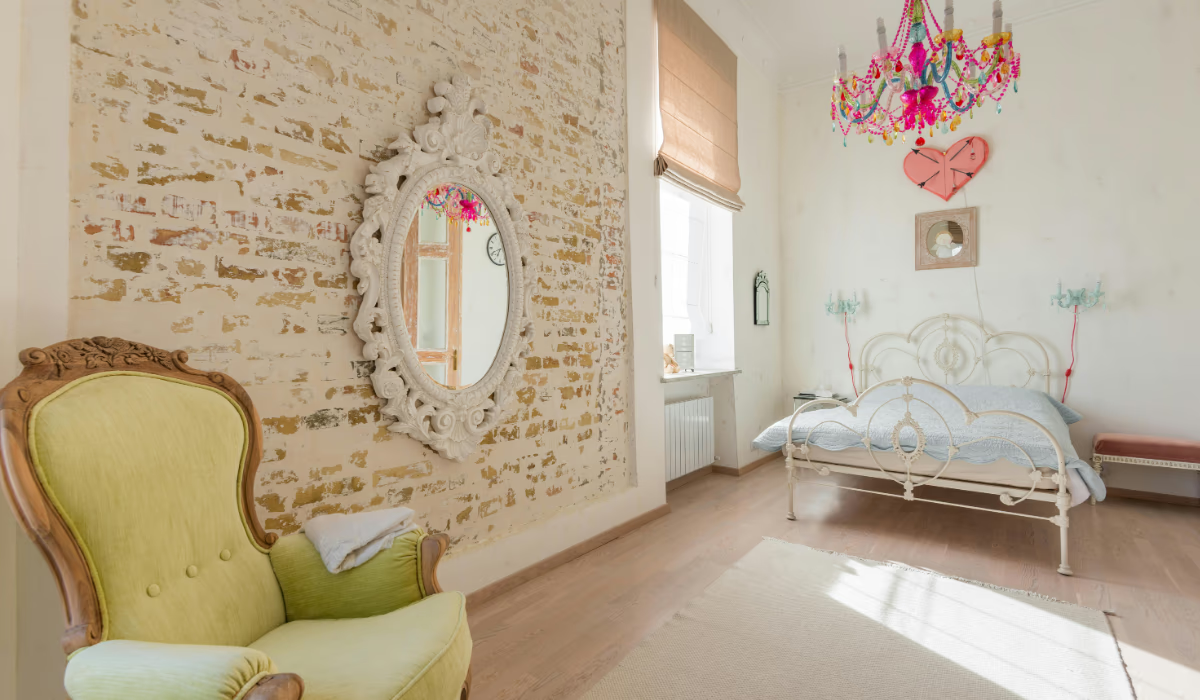Shabby chic style is a design approach that blends vintage charm with cozy elegance. It focuses on aged furniture, muted colors, and romantic details to create a soft and inviting atmosphere. Imperfections such as chipped paint or distressed wood are valued as part of its beauty.
This aesthetic began in the late 20th century and quickly grew in popularity for its relaxed yet stylish appeal. It remains relevant today because it balances comfort with timeless elegance.
Origins and Evolution of the Shabby Chic Aesthetic
Shabby chic draws inspiration from English cottages and country homes where natural wear and tear gave furnishings a lived-in look. Designers adopted this charm, transforming it into a deliberate style.
Over time, shabby chic evolved. While the essence of vintage, aged, and romantic details remains, modern versions use lighter touches, less clutter, and more balance between rustic and refined elements.
Key Characteristics of Shabby Chic Interior Design
Color Palette and Finishes
Shabby chic relies on soft tones such as white, cream, beige, and pastel shades like blush pink, sage green, or powder blue. Finishes often appear distressed or weathered, emphasizing the charm of age.
Furniture and Accessories
Furniture is typically vintage or distressed. Painted wood, slipcovered seating, and repurposed antiques are common. Accessories include ornate mirrors, floral ceramics, ruffled fabrics, and elegant light fixtures.
Fabrics and Textures
Linen, lace, and cotton fabrics define this style. Patterns such as florals or faded stripes reinforce the cozy aesthetic. Layered textiles—like cushions, throws, and curtains—add depth and warmth.
Balancing Rustic and Romantic
The shabby chic aesthetic balances worn textures with graceful details. For example, distressed tables may be paired with crystal chandeliers. This harmony ensures the space feels curated rather than chaotic.
How to Create the Shabby Chic Look at Home
- Begin with a neutral backdrop. Walls in white or light pastels create the perfect foundation.
- Choose furniture that reflects age or add distressed effects yourself with chalk paint or sanding techniques. Mix pieces from different eras as long as they share harmony in tone or style.
- Use soft fabrics like linen or cotton with floral prints, lace, or ruffles. Layering is key: slipcovers, cushions, and light curtains add comfort.
- Decorate with vintage accessories but avoid overloading. Select statement pieces such as mirrors, frames, or antique lamps, and allow space for each item to shine.
- The lighting should be soft and inviting. Chandeliers, table lamps, or sheer curtains that allow natural light will enhance the overall aesthetic.
Ideal Spaces for Shabby Chic Style
This style thrives in living rooms, bedrooms, and cozy reading areas where comfort is a priority. It brings warmth and nostalgia, making spaces feel personal and inviting.
If you prefer sleek, modern interiors, shabby chic might not fit entirely. However, you can still borrow elements—such as distressed furniture or soft textiles—to blend with other design styles.
Conclusion
Shabby chic style celebrates the beauty of imperfection and the comfort of age-worn elegance. With its muted colors, distressed furniture, and romantic fabrics, shabby chic interior design creates a relaxed yet stylish home. The shabby chic aesthetic invites warmth, nostalgia, and charm into everyday living.
FAQs
What is the difference between shabby chic and cottage style?
Shabby chic emphasizes vintage furniture, distressed finishes, and romantic details, while cottage style leans toward simplicity and rustic comfort.
Can shabby chic work in small homes?
Yes, light colors and carefully chosen vintage pieces make small spaces feel cozy without overwhelming the room.
How do I maintain shabby chic furniture?
Clean regularly, wash slipcovers, and repaint or reseal distressed pieces as needed. The look is worn, not neglected. Can shabby chic be mixed with modern design?
Absolutely. Pairing shabby chic elements with modern pieces adds contrast and keeps the space fresh and balanced.







